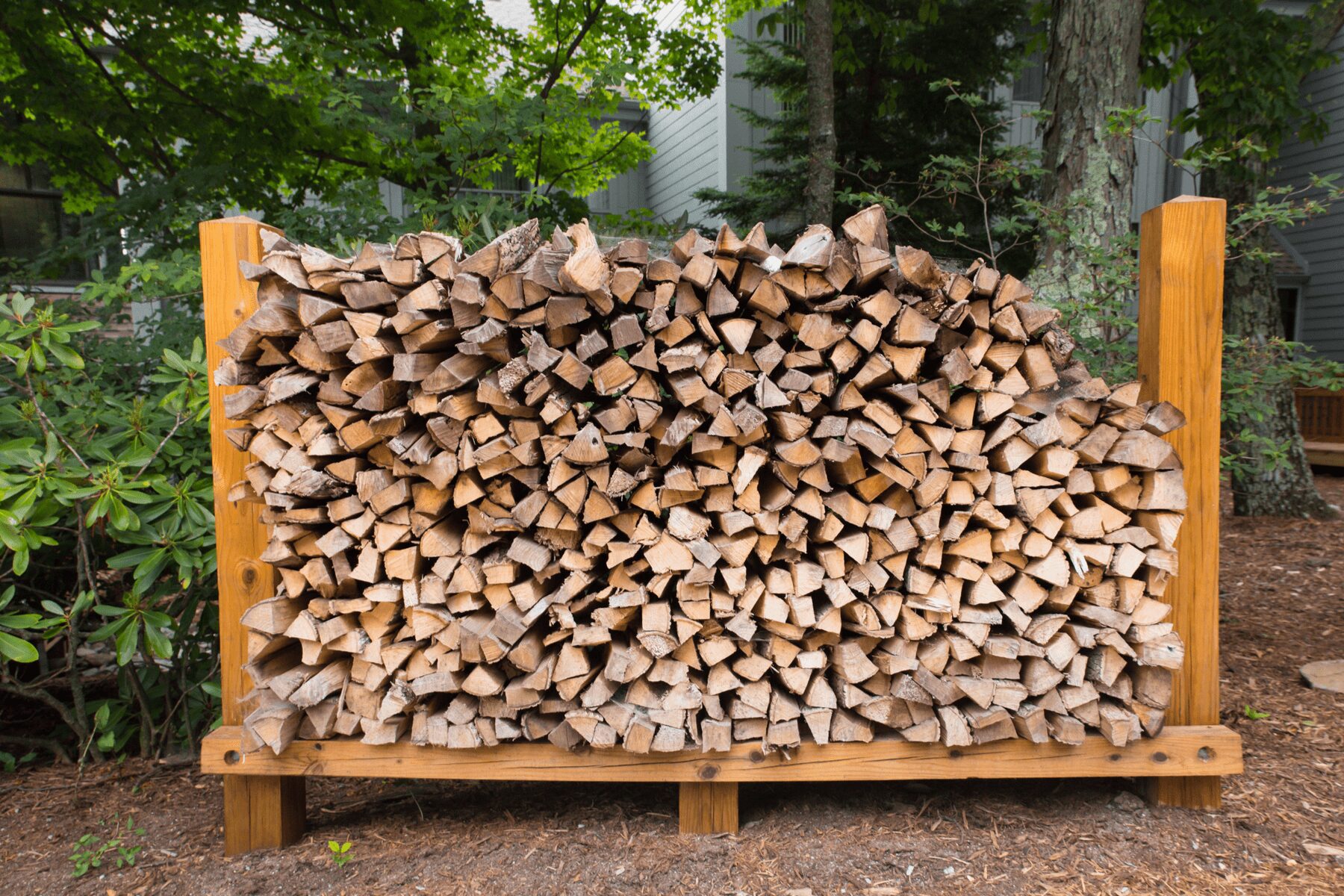Your Simple Guide to Proper Firewood Storage

Sitting around a warm fireplace is one of the many great things about the winter season. It feels like it’s Christmas and helps keep your home warm. What’s not to love? Maybe the work that goes into keeping that fire burning. If you're going to use firewood to keep the fire going, you need to be aware of the potential hazards of using and storing it. However, with the proper firewood storage techniques listed below, it doesn’t have to be time consuming or dangerous.
Why you need to season firewood
Seasoned firewood is wood that has been set out to dry for a long time. The main purpose of seasoning wood is to cut down on the moisture in it. Moist wood doesn’t burn well and can be quite dangerous, so you should always use seasoned firewood in a fire. When you burn moist wood, creosote builds up in the chimney. This leads to the air in your home being dirty, along with a large risk of starting a chimney fire. Cleaning the chimney regularly helps, but seasoned wood is the best way to lower the risk.
Related: Should You Have a Fireplace in a Rental?
So, what firewood storage should you use to season firewood? You have a few options available to you.
Firewood rack
The most common solution is a firewood rack. It’s just a simple structure, usually wood, but occasionally made of other materials. This keeps the firewood off the ground and can provide some cover to keep moisture from getting into the wood.
Firewood cover
If the rack alone isn’t enough, you’ll want to add a firewood cover, especially in case of heavy rain or snow. These covers will keep moisture out while still being easy to remove when you need to bring in wood for a fire.
Seasoning shed
If you have a lot of wood or live in a location with really bad weather, you should invest in a seasoning shed. This are similar to a large tent or small greenhouse and can help season the wood in a shorter amount of time. They can be expensive, generally costing several hundred dollars, but are the best solution for firewood storage and seasoning if you can afford it.
Stacking the wood properly
Once you have decided which type of firewood storage to use, you have to be sure you’ve stacked it correctly. Here’s what you need to know about stacking firewood:
- Make sure it doesn’t touch the ground
- Keep the firewood away from the house to keep pests from getting in
- Leave room for air to circulate
- Stack the wood no more than 4 feet high
- Have the bark-side down when the wood is moist, bark-side up when the wood is seasoned
Storing your firewood indoors
Storing a lot of firewood indoors for a long time is a bad idea. That said, keeping a rack set up near the fireplace with enough firewood for a day or two is a good compromise between hazard and hassle. Just make sure it’s not so close to the fireplace that it might ignite. Put a screen across the fireplace and keep the firewood rack out of the way to keep the risk down, and make sure the fireplace never burns unattended.
Related: Fire Prevention Tips
Give it time
Seasoning firewood can take some time. Generally, you’re going to need 6-12 months to season it fully, so this is a project you’ll want to start sooner than later. You can buy firewood that’s already seasoned if you don’t have the time, just know that it tends to cost more than unseasoned wood.
Use local firewood
There may be local laws against buying firewood from a source too far away, and this is for good reason. There’s a good chance that firewood can bring pests and diseases with it, and you don’t want to be the one who brings an invasive species into your home. Buy locally to cut down on the number of possible issues.
Despite the risks, finding proper firewood storage doesn’t have to be a big, scary project. With some preparation and the proper equipment, you can make it much simpler and easier to do.

